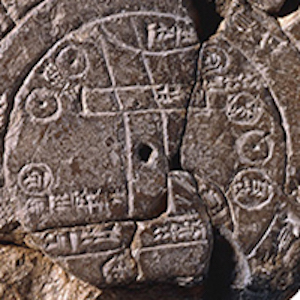Ancient (before 500 CE)
Seneca the Younger, Moral Letters to Lucilius
Moral Letters to Lucilias was written by the Roman philosopher Seneca the Younger around 65 CE. There are 124 letters in the collection.
Sophocles, Oedipus the King
Oedipus the King, also known as Oedipus Rex, is an ancient greek play written by the Athenian philosopher, Sophocles, around 420 BCE. The text presented is an excerpted portion from the second half of the play.
Homer’s The Iliad
Homer's The Iliad is an ancient greek poem written around the eighth century. The poem is set during the Trojan war and highlights the conflict between King Agamemnon and the warrior Achilles. The text provided is an excerpt from book three.
Source Collection: Diversity and Change in Greco-Roman Religious Beliefs
This module will examine four different indigenous theologies within the Greco-Roman world to understand the diversity and change that occurred within Greco-Roman religion over the centuries.

Crash Course World History
Crash Course World History is a perfect supplementary video overview for AP students, but it is too fast and jumpy to be the main source of learning for a class.
World History Encyclopedia
Overall this site is a fantastic resource in terms of the vast amounts of material collected for use. The site is primarily user-generated, with a system to ensure the entries uphold the website's management team's standards.
National Museum of China
In summation, the NMC site has a number of areas that will prove interesting to educators and most casual visitors, but overall, its main function is to provide information about the museum itself.
Teaching East Asia Online Curriculum Projects
The lessons provided are insightful explorations of Japanese history that strike a balance between academic rigour, accessibility, and being able to draw student attention, making them a valuable addition to any world history teacher’s toolkit.
A History of the World in 100 Objects
Overall A History of the World in 100 Objects is a great resource to teach world history through visual culture in an accessible and succinct format for both school and college-level classes.
Babylonian Map Tablet
This ancient map depicts the known world as imagined by the Babylonians of the 6th century BCE. Like many ancient maps, this cuneiform tablet is concerned less with mathematically plotting space and direction than with simply capturing the various places and peoples in the world around Babylon.